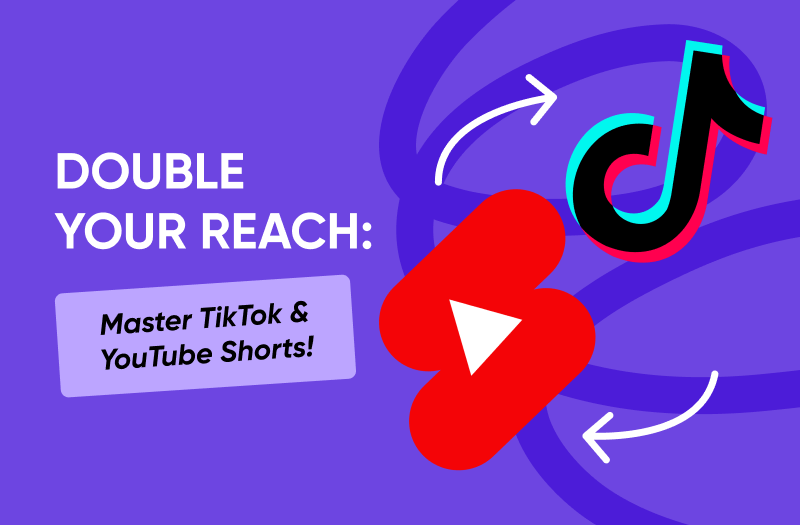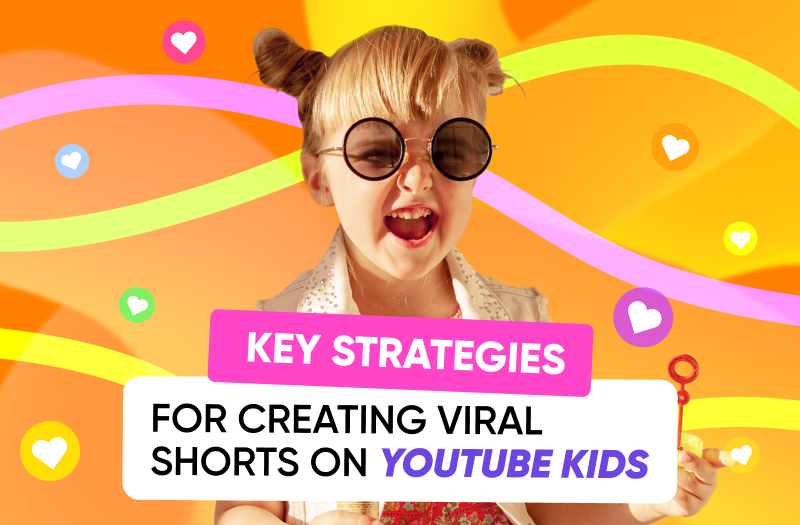
Not Sure Which Languages to Choose?
YouTube Shorts are a core part of how creators grow and earn. And when you combine Shorts with smart localization, the numbers speak for themselves.
At AIR Media-Tech, we’ve helped over 400 channels grow through translation and localization. And a big part of that success? Localized Shorts. They work.
Real Results: Ninja Kidz TV Português
Here’s a practical example from our case archive: Ninja Kidz TV Português.
We localized their content into Portuguese, started posting Shorts consistently, and watched the numbers explode. Over the past year, Shorts have driven 90% of their total traffic and 50% of their revenue.
Yep, half their money comes from Shorts. And there’s a clear strategy behind it.
To boost growth, we began with five Shorts per day for six months straight. That built a strong presence in Brazil. Now, the channel runs at a steady pace of 1 to 3 Shorts daily, and the performance still holds strong.
Sure, RPMs in Brazil aren’t massive. But when you have volume like this, the revenue adds up fast. That’s why Shorts localization in 2025 is one of the biggest trends in the YouTube community.
The Myth of High RPMs (And Why It’s Misleading)
If you’ve ever googled “YouTube CPM by country,” you’ve probably seen long lists of countries with fancy CPMs like $20+ and thought, “I need to go after those markets.”
Here’s the problem: that’s only part of the picture.
Yes, a higher RPM (revenue per 1,000 views) sounds appealing. But chasing those numbers can actually lead you in the wrong direction. We’ve seen it happen again and again.
Let’s break down the top 12 countries and their RPMs on YouTube Shorts:
- USA – $0.328
- Switzerland – $0.205
- Australia – $0.193
- South Korea – $0.185
- UK – $0.166
- Canada – $0.165
- Germany – $0.163
- Hong Kong – $0.147
- Japan – $0.144
- Taiwan – $0.140
- Austria – $0.135
- New Zealand – $0.113
Solid, right? But here’s the list of countries creators often overlook:
- India – $0.008
- Indonesia – $0.012
- Brazil – $0.045
- Mexico – $0.040
- Philippines – $0.023
- Turkey – $0.024
- France – $0.102
Looks low? That’s the catch. Here’s how it works.
The Bigger Picture
Brazil’s RPM is only $0.045. But for Ninja Kidz TV Português, the volume of views was so massive that 50% of the total revenue came from Brazil alone.
You could fight for views in the U.S. with 12 million other creators, or you could dominate in Brazil, Mexico, or Indonesia with way less competition and way more opportunity.
Here’s the thing we’ve seen across hundreds of channels:
Low RPM ≠ Low Income.
Low RPM + High Views = High Income.
Simple.
So if you’re thinking about reaching a global Shorts audience, don’t get stuck chasing CPM and RPM unicorns. You need to look at audience size, competition, and growth potential, not just the payout per view.

Need expert help?
AIR is a YouTube-recommended vendor for translation and localization. We ensure top-quality service tailored to your growth. Reach out to us to learn more!
Why Shorts Are Built for Localization
We’ve tested this across dozens of languages, and the trend is clear: Shorts work especially well when localized. Why?
- They’re short (duh), so viewers are more likely to engage.
- They’re bingeable. Once someone watches one, they often watch five more.
- YouTube pushes Shorts hard in the feed.
- YouTube Shorts now pull in 200 billion views every day
- 2 billion monthly users watch Shorts
- For many creators, Shorts generate over 80% of total channel views
In markets like India, Indonesia, or Brazil, multilingual short videos get an extra algorithm boost simply because there’s less localized content competing for attention. That’s a huge opportunity.
And with multilingual dubbing now easier than ever, there’s no excuse not to start.
OK, So How Should You Translate YouTube Shorts?
The answer depends on where you are in your creator journey, what kind of content you make, and what markets you're trying to reach. But generally, there are three option:
1. AI & Auto-Dubbing
AI dubbing isn’t perfect. But it’s fast, cheap, and smart for one thing: testing.
You want to know if Brazil, Argentina, or Japan is worth doubling down on? Turn on YouTube’s auto-dubbing, or run your Shorts through AI tools and see what hits. It’s the easiest way to check where your content has potential without spending weeks or money upfront.
But don’t expect magic. Engagement on auto-dubbed content is still 5X lower than with professional, voice-acted localization. So use it to explore, not to scale.
Test first. Then go pro where the numbers tell you.
2. One-Off Expert Dubbing
Ready to go beyond experimentation? Bring in the experts.
There are teams (including ours) that specialize in localizing vertical videos for YouTube. Native-speaking voice actors, tight scripts, Shorts-friendly pacing. It all matters.
You get better quality, more engagement, and better retention metrics. If you’ve got some viral Shorts already, this is how you double down on them and get more ROI from your top-performing content.
3. Full Scale Localization
This one’s for the big players. You’ve got millions of views, maybe even multiple channels. You want fully localized Shorts channels, with dedicated upload schedules, regional branding, and language-specific optimization.
That means voice actors, dubbing, Shorts formatting, thumbnails, metadata, pinned comments, you name it. We’ve helped creators dominate in smaller countries with this exact approach. We’re talking #1 trending in countries like Romania, Serbia, and Bulgaria — beating local competitors.
If that’s where you’re headed, this is the move.
Our AIR Translation team can create a regional Shorts strategy specifically for your channel. Choose what option you prefer (high-quality AI dubbing, voice actors, or turnkey translated channel launching), and contact us.

Localization Is a Long-Term Strategy
We’ve been doing this for years, and here’s what we know: localization is about owning entire markets. Especially with Shorts, where attention is fast and competition is still manageable in many non-English regions. So, translate Shorts for engagement, new revenue streams, and expanding the personal brand.
Yes, some RPMs may look low. But if you look at what actually brings revenue, growth, and brand reach, it’s about volume, reach, and being first in regions where creators haven’t yet flooded the feed.
Final Reminder: The Language Barrier is Your Opportunity
Every barrier for someone else is an opportunity for you. Language is one of the biggest ones. Most creators never translate their content. That means you can step in, do it right, and own that space.
So, whether you’re using AI dubbing, expert translators, translated subtitles for Shorts, or launching fully localized Shorts channels, the key is to start.
And if you want help?
You know where to find us.
Let’s go global, one Short at a time.





